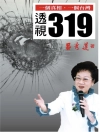Traditionally, stability in Asia has relied on America’s bilateral alliances with Japan, Australia, and the Republic of Korea. Yet in recent years, emergent and more active multilateral forumssuch as the Six-Party Talks on North Korea and the East Asia Summithave taken precedence, engendering both cooperation and competition while reflecting the local concerns of the region.
Some are concerned that this process is moving toward less-inclusive, bloc-based ‘talking shops’ and that the future direction and success of these arrangements, along with their implications for global and regional security and prosperity, remain unclear. The fifteen contributors to this volume, all leading scholars in the field, provide national perspectives on regional institutional architecture and their functional challenges. They illuminate areas of cooperation that will move the region toward substantive collaboration, convergence of norms, and strengthened domestic institutions. They also highlight the degree to which institution building in Asiaa region composed of liberal democracies, authoritarian regimes, and anachronistic dictatorshipshas become an arena for competition among major powers and conflicting norms, and assess the future shape of Asian security architecture.
Tabella dei contenuti
Preface
Abbreviations
1. Unbundling Asia’s New Multilateralism
Bates Gill and Michael J. Green
Part I National Strategies for Regionalism
2. Evolving U.S. Views on Asia’s Future Institutional Architecture
Ralph A. Cossa
3. Chinese Perspectives on Building an East Asian Community in the Twenty-first Century
Wu Xinbo
4. Regional Multilateralism in Asia and the Korean Question
Lim Wonhyuk
5. Japan’s Perspective on Asian Regionalism
Akiko Fukushima
6. India and the Asian Security Architecture
C. Raja Mohan
7. Australia’s Pragmatic Approach to Asian Regionalism
Greg Sheridan
8. The Strong in the World of the Weak: Southeast Asia in Asia’s Regional Architecture
Amitav Acharya
Part II The Functional Challenges
9. Emerging Economic Architecture in Asia: Opening or Insulating the Region?
Amy Searight
10. Norms and Regional Architecture: Multilateral Institution Building in Asia and Its Impact on Governance and Democracy
William Cole and Erik G. Jensen
11. Defense Issues and Asia’s Future Security Architecture
Michael E. O’Hanlon
12. Nontraditional Security and Multilateralism in Asia: Reshaping the Contours of Regional Security Architecture
Mely Caballero-Anthony
13. Challenges to Building an Effective Asia-Pacific Security Architecture
Brendan Taylor and William T. Tow
Appendix. Selected List of Principal Regional Institutions in Asia
Contributors
Index
Circa l’autore
Michael J. Green is the Japan Chair and senior adviser at the Center for Strategic and International Studies (CSIS) and an associate professor of international relations at Georgetown University. He has served as special assistant to the president for national security affairs and senior director for Asian affairs at the National Security Council. His publications include Japan’s Reluctant Realism and Arming Japan.Bates Gill is CEO of the United States Studies Centre at the University of Sydney. He previously held positions as the director of the Stockholm International Peace Research Institute (SIPRI) and the CSIS Freeman Chair in China Studies and was a senior fellow in foreign policy studies and the inaugural director of the Center for Northeast Asian Policy Studies at the Brookings Institution. His most recent book is Rising Star: China’s New Security Diplomacy.












